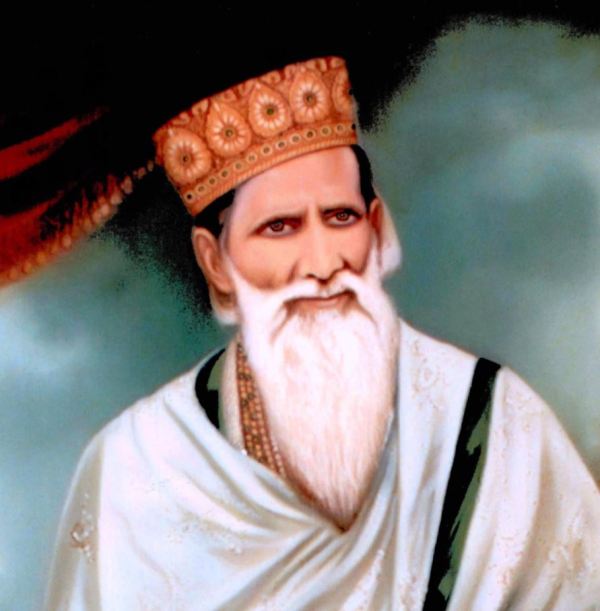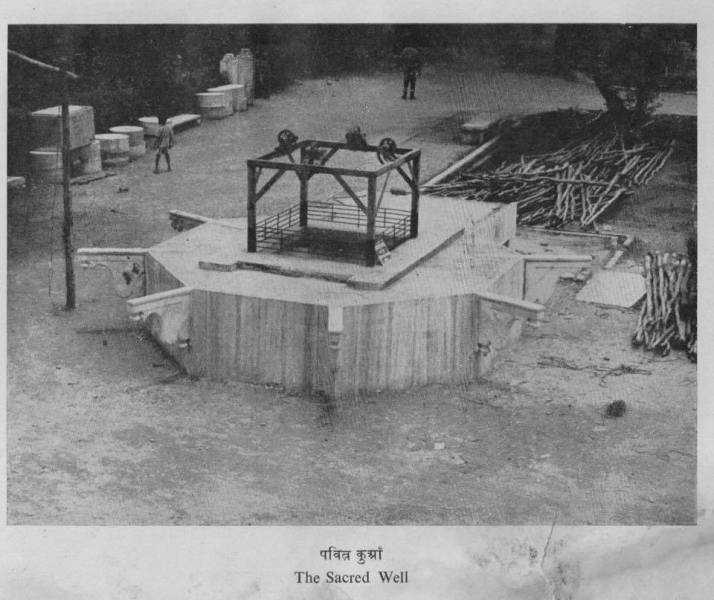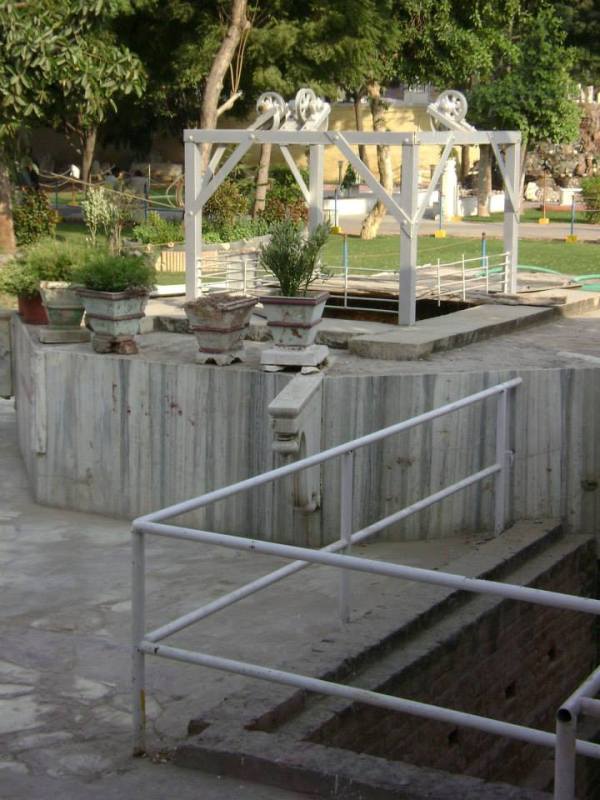Shiv Dayal Singh Seth Age, Death, Wife, Children, Family, Biography & More
| Bio/Wiki | |
|---|---|
| Honorific Name | Param Purush Puran Dhani Huzur Soamiji Maharaj [1]Radha Soami Satsang Soami Bagh |
| Profession | Spiritual Leader |
| Famous for | Being the founder of the Radha Soami Faith |
| Physical Stats & More | |
| Eye Colour | Black |
| Hair Colour | Grey |
| Personal Life | |
| Date of Birth | 24 August 1818 (Monday) |
| Birthplace | Panni Gali, Agra, Ceded Provinces, British India |
| Date of Death | 15 June 1878 |
| Place of Death | Panni Gali, Agra, North-Western Provinces, British India |
| Age (at the time of death) | 59 Years |
| Zodiac sign | Virgo |
| Nationality | Indian |
| Hometown | Agra, Uttar Pradesh |
| Educational Qualification(s) | Parmarth (Spiritual Practices) and Hindi, Urdu, Persian, Gurumukhi, Arabic, and Sanskrit languages at school [2]Internet Archive |
| Religion | Sant Mat, Radha Soami |
| Sect | Uttari Bharat ki Sant Parampara (Sant Tradition of North India) [3]citation |
| Food Habit | Vegetarian [4]Neural Surfer |
| Relationships & More | |
| Marital Status (at the time of death) | Married |
| Family | |
| Wife | Naraini Devi (Died on 1 November 1894) |
| Children | He had no children. |
| Parents | Father- Dilwali Singh Seth (a Sahejdhari Khatri) Mother- Name Not Known |
| Siblings | Brothers- 2 • Rai Bindraban • Lala Pratap Singh Seth (Chachaji Sahib) |
Some Lesser Known Facts About Shiv Dayal Singh Seth
- Shiv Dayal Singh Seth was an Indian spiritual master who is widely known as Soamiji Maharaj. In the 19th-century, he founded the Radhasoami Faith. Soamiji Maharaj was respectfully named as ‘Param Purush Puran Dhani Huzur Soamiji Maharaj’ by his devotees.
- Soamiji’s father and grandfather were both Persian scholars. Initially, his family followed Sikh Guru Nanak and Guru Granth Sahib. Later, they also attended the sermons of spiritual Guru Tulsi Saheb at Hathras, Uttar Pradesh. Soamiji’s father belonged to the Sahejdhari Khatri community.
- Soamiji got married to Naraini Devi at an early age. Soamiji’s wife was also his follower, and later, she was also considered a spiritual guru by her devotees. She was addressed by the name ‘Radhaji’ by her followers. She was the daughter of Izzat Rai of Faridabad.
- The grandparents and parents of Soamiji Maharaj were from Punjab. In the 1800s, the colonial British Government was setting up a major military centre at Agra, Uttar Pradesh and were recruiting the Sikhs personnel from the Punjab region. Hence, after his birth, the family of Soamiji Maharaj shifted to Agra from Punjab. He was sent to a local school at the age of five to learn Hindi, Urdu, Persian and Gurumukhi, Arabic and Sanskrit languages and spiritual practices.
- Soamiji Maharaj began working as a Persian language translator to a government officer soon after finishing his studies at a very young age. [5]Radha Soami Reality Shortly afterwards, he also started giving personal tuitions to the Raja of Ballabhgarh as a Persian language tutor. However, he quit tutoring soon after the demise of his father to join his family business. On the other side, during the same time, his brother also got a government job in postal services. Soamiji abandoned his family business considering his brother to be the alternate earner for the family. In addition to this, Soamiji was also not able to take off the time for spiritual practices and meditation while working at the business; therefore, he left the business.
- Soon after abandoning his family business, he solely focussed on meditation and spiritual practices. On the basis of Sikh scriptures and the teachings of Tulsi Sahib and his predecessors, Soamiji Maharaj began delivering spiritual discourses or sermons at his residence at Agra. With the passage of time, he raised his personal followings. Surat Shabd Yoga practice was the process followed by Soamiji Maharaj to initiate his followers. He spent his whole life in Agra while initiating his devotees, meditating, and teaching Sant Mat (thoughts of a guru). [6]Radha Soami Reality
- Soamiji Maharaj’s guru Tulsi Saheb died in 1843. Soon after Tulsi Saheb’s demise, Soamiji Maharaj locked himself in a room within a room at his residence for fifteen years. He kept meditating and absorbing himself within while concentrating on Surat Shabd Yoga. His diet was meagre. As per a spiritual website on the internet, he did not take more than two ounces a day for straight twenty years. It was also said that while sitting in the meditation, he used to tie his long hair to the wall at his back so that if by chance he fell asleep the pain of his falling head kept him awake.
- Vasant Panchami is considered an auspicious day in Radhasoami Faith because after fifteen years of rigorous meditation, in 1861, on Vasant Panchami (a spring festival), Soamiji Maharaj publicly delivered a spiritual discourse (Satsang) in Agra. Almost all of his discourses included the Abhyas (Spiritual Practices) by his followers. Followers would seek help from him for the hurdles they faced during concentrating their minds and soul behind their closed eyes. In his spiritual discourses, he focussed on the immense grace of the supreme lord, the original abode of the soul, love, true guru, Satsang and the enchantment of the five words i.e Naam (Name). To attain salvation and redemption, he used to focus on the ethics of human life. For further instructions in this Abhyas (Meditation Practice), followers having trust, earnest and faith in their spiritual guru often visited his place to seek further advice in spiritual progress while asking the hurdles encountered during meditation Abhyas (practice) and understanding its secrets and mysteries, and to had his Darshan (a spiritual look at him).
- Reportedly, after attaining the initiation from Soamiji Maharaj and practising the meditation practice behind the eyes, devotees experienced and realized the internal grace, immense powers, glory and mercy of the Lord within them. Soamiji Maharaj spent seventeen years of his life delivering the Satsangs (spiritual discourses) while narrating the secrets of the Original Abode of human lives, giving initiation to the Parmarthis, and the procedure to reach that Abode through Surat Shabd Marga. They were delivered day and night. The Satsangs that began in the evening often continued till midnight or the next morning.
- The main influence behind Soamiji Maharaj’s teachings was considered the Tulsi Sahib’s Surat Shabd Yoga (the union of the soul with the divine power while listening to the inner sounds), Guru Bhakti (a complete devotion to the master) and a high character with a moral living with a strict Lacto-vegetarian diet and abstinence from meat, drugs, alcohol and sex outside marriage. He did not endorse celibacy. It explained that even while living in a family one could follow the spiritual path. It was an easy meditating procedure taught by Soamiji that any man, woman, young, old could perform. This reunion of the Lord with its soul behind the closed eyes under the guidance of Soamiji gave birth to the Radhasoami Faith. In one of his writings, he mentioned,
The Jiva, ever since his descent from the Original Abode, has been wandering and roaming in Char Khans (four species of life) and the transmigratory forms of the cycle of Eightyfour.” [7]Internet Archive
- According to Soamiji, his beliefs and teachings include following a Living Guru – who lives a simple life and lives on his own earnings, Remembering the Sat Naam (Bhajan – Simran), Listening to the Spiritual Discourses by the Guru, Seva – serving the needy, Kendra – visiting the Guru or community organisation, Bhandara – attending the large gathering of the followers to seek blessings of the present guru along with the spiritual discourses.
- One of the Soamiji Maharaj’s beloved disciples was Rai Salig Ram Saheb Bahadur who served his master with all his riches, mind and body for twenty years. He used to live with Soamiji Maharaj and was in the habit of bringing water to Soamiji Maharaj from a well that was a mile away. Shibboji and Bukkiji were the two beloved female disciples of Soamiji Maharaj. Soamiji’s youngest brother ‘Partap Singh’ was his follower from the age of ten or twelve, and later, his son Sudarshan Singh Seth was also started following him. Vishnoji was Soamiji’s kitchen attendant and was his adored follower.
- The two books were written by Soamiji based on his inner spiritual experiences titled ‘Sar Bachan (Poetry)’ – Volume 1 and 2. [8]Taj Mahal
- In 1878, after the demise of Soamiji Maharaj, his selective followers such as his wife Naraini Devi, his brother Partap Singh (“Chachaji”), Sanmukh Das, Jaimal Singh Maharaj (an army soldier), Gharib Das of Delhi, and Rai Salig Ram Saheb Bahadur started claiming to be his legal heirs. However, they all failed to claim their legal rights amid this battle. Later, they established their own separate Radhasoami centres for the spiritual discourses and led to the multiplication of several Masters and their teachings all over India. They all followed the teachings and the discourses according to the Sant Mat Path elucidated by Soamiji Maharaj.
- In the 1980s, one of the largest branches of the Radhasoami movement was established by Baba Jaimal Singh Ji in Beas, Punjab. This branch has multiplied itself enormously over the decades under the guidance of each successor (from Sawan Singh to Jagat Singh and Charan Singh to the current master, Gurinder Singh Dhillon). More than two million devotees have been initiated at Beas, Punjab. [9]Oxford Bibliographies
- Soon, other branches were established at Soami Bagh, Peepal Mandi, and Dayalbagh in Agra. A memorial tomb was also built at Soami Bagh in honour of Soamiji Maharaj in 1908.
- Rai Salig Ram initiated his own centre after the demise of Soamiji Maharaj at Peepal Mandi where Rai Salig Ram was succeeded by his son, grandson, and great-grandson. The name of his great-grandson is Agam Prasad Mathur. Later, Kamta Prasad Sinha, Anand Sarup, Gurcharandas Mehta, Dr M.B. Lal Sahab, and Professor Prem Saran Satsangi established the largest centre at Dayalbagh in Agra.
- The Ruhani Satsang centres were established by Kirpal Singh, a follower of the Beas Master, Sawan Singh after the demise of Sawan Singh Maharaj. It was a group related to Radhasoami Faith in Delhi. Another centre named Manavta Mandir was established by Faqir Chand in Hoshiarpur, Punjab in 1962.
- Later, Bagga Singh established The Tarn Taran Satsang centre, and Param Sant Tarachand Ji Maharaj (Bade Maharaj Ji) established a centre named Radha Swami Satsang Dinod in Haryana in 1860. [10]Oxford Bibliographies
- Another disciple of Beas Guru Sawan Singh Ji Maharaj named ‘Khema Mal (“Mastanaji”)’ established a branch related to Radhasoami Faith at Sacha Sauda Dera in Hissar, Haryana in 1948. Satnam Singh was Khema Mal (“Mastanaji”) was a disciple who was his successor. Later, Gurmeet Ram Rahim Singh was appointed as the Master of the Dera. However, he was arrested and sent to jail in 2017 under the rape charges. After his arrest, a large number of his followers provoked riots on the roads that led to the death of over thirty people in the area. [11]Oxford Bibliographies
- The roots of the Radhasoami Movement is established not only in India but also in foreign countries. It extended its movements in North America, including Paul Twitchell’s Eckankar, Ching Hai’s Quan Yin, John-Roger Hinkins’ Movement of Spiritual Inner Awareness (MSIA), and Gary Olsen’s MasterPath. [12]Oxford Bibliographies
- Shiv Dayal Singh Seth followed a meagre diet routine throughout his life. He used to take less than two ounces a day for twenty years.
- Tulsi Saheb once warned the mother of Soamiji Maharaj that a Param Sant had incarnated himself in their home so they might not get attached to him. [13]Taj Mahal [14]Internet Archive He said,
Treat your son with high reverence as He is a great soul.”
- Soamiji Maharaj used to meditate in a room within a room at his residence. It was the same room where he was born and took his last breath. Soamiji received initiation at the age of six and spent most of his time meditating in his room. His beloved followers Baba Jaimal Singh and Saligram Bahadur were also initiated by Soamiji in the same room. Reportedly, the inner light and sound meditation along with the initiations were used to conduct in this room.
- A well in Soamiji Maharaj’s house was considered a mysterious and sacred well, and later, which was renovated by Radhasoami trust and Radhasoami Satsang Administrative Council at Soami Bagh, Agra.
- Kirpal Singh (the founder of Ruhani Satsangs) wrote in one of his books titled ‘A Great Saint, Baba Jaimal Singh, His Life and Teachings’ on his master Baba Jaimal Singh’s initiation process by Soamiji Maharaj. He described,
Swami Ji then began to instruct him into the theory and practice of Surat Shabd Yoga, and when the instructions were over, asking the youth of seventeen to sit down for meditation, he left the room. As soon as Jaimal Singh sat down for meditation, he got lost in samadhi. The night came and passed away, the day broke, but he continued motionless, lost in the inner bliss he had discovered. Another day saw itself swallowed by the night, and the night saw itself replaced by another day, and yet the youth sat lost to the world around him.”
He further said,
When some forty-eight hours had thus gone by, Swami Ji asked some of the disciples if they knew where the visitor from the Punjab had disappeared. ‘We saw him two days ago at the Satsang,’ they said, ‘but we have not seen him since. Swami Ji smiled and proceeded straight to the little room where he had left his latest disciple and which none had entered for two days. He placed his hand on Jaimal Singh’s head, and when the latter’s soul returned to the normal physical consciousness and he opened his eyes, he saw his Guru beaming at him. ‘Do you, my boy, still doubt if your Master be a true Sikh or not?’ He asked with a twinkle in his eye.”
- Soamiji was excelled in the Persian language, and he used to teach Persian to Khattri, Brahman and Bania boys for free. Soamiji was also an Arabic language expert. [15]Internet Archive
- Soamiji was a great poet. A snip from his poetic compositions is shown below.
- Soamiji Maharaj was in a habit of smoking ‘hookah’ during the breaks of the spiritual discourses. This was mentioned by Soamiji’s brother ‘Pratap Singh Seth’ in one of his books. [16]Radha Soami Supreme Knowledge
References/Sources:























